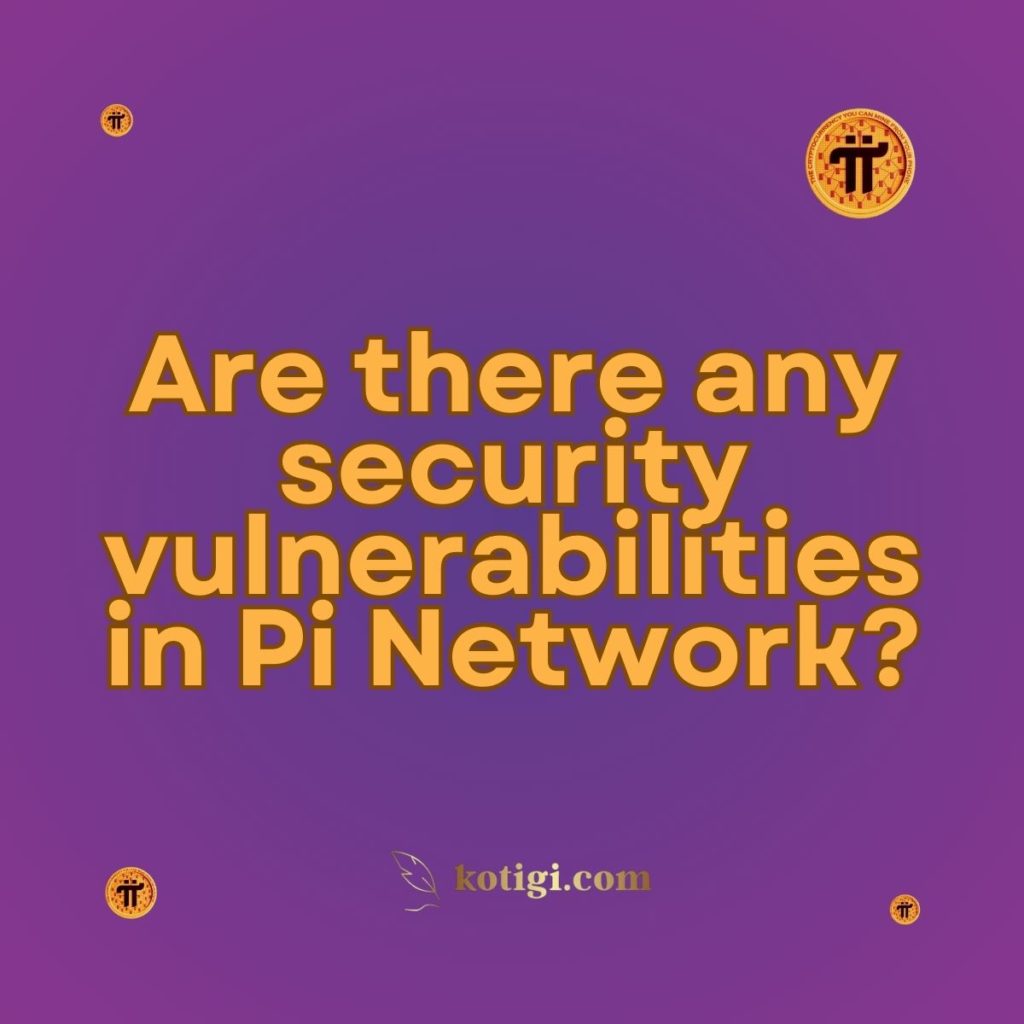
Are there any security vulnerabilities in Pi Network?
As with any emerging technology, Pi Network, a new cryptocurrency platform, faces potential security vulnerabilities. While the network employs various security measures to protect users and their assets, it’s important to understand that no system can be completely immune to risks. Here’s a look at potential security vulnerabilities that might affect Pi Network and how they are being addressed:
1. Software and Code Vulnerabilities
1.1. Bugs and Flaws:
Like any software, Pi Network’s platform may contain bugs or coding flaws that could be exploited by attackers. These vulnerabilities can arise from errors in the code or from unanticipated interactions between different components of the system.
1.2. Regular Audits:
To address this risk, Pi Network conducts regular code audits and security reviews. These audits help identify and fix vulnerabilities before they can be exploited. Keeping the software updated with patches and improvements is essential for maintaining security.
2. Data Privacy Concerns
2.1. Personal Information:
Users are required to submit personal information during the KYC (Know Your Customer) process. This information, if not properly protected, could be at risk of exposure or misuse in the event of a data breach.
2.2. Encryption and Compliance:
Pi Network uses encryption to protect sensitive data and follows best practices for data security. Ensuring that the platform complies with privacy regulations and maintains robust data protection measures is crucial to mitigating these concerns.
3. Phishing and Social Engineering
3.1. Phishing Attacks:
Phishing attacks, where attackers deceive users into revealing their credentials or personal information, are a common threat. Users might receive fake communications that appear to be from Pi Network, tricking them into disclosing sensitive information.
3.2. User Education:
Pi Network emphasizes user education on recognizing phishing attempts and securing accounts. Implementing multi-factor authentication (MFA) and providing guidance on avoiding scams can help protect users from such attacks.
4. Mobile Device Vulnerabilities
4.1. Device Security:
Mobile devices used to access Pi Network can be vulnerable to security threats such as malware, unauthorized access, or physical theft. These vulnerabilities could potentially compromise the security of the app and the user’s account.
4.2. Secure Practices:
To mitigate these risks, users should follow best practices for mobile device security, such as keeping the device’s operating system and apps updated, using strong passwords, and enabling biometric authentication.
5. Network and Infrastructure Risks
5.1. Distributed Attacks:
As a distributed network, Pi Network could be susceptible to attacks such as Distributed Denial of Service (DDoS) attacks, which aim to overwhelm the network and disrupt service.
5.2. Resilience and Monitoring:
Pi Network employs monitoring systems to detect and respond to suspicious activities. Implementing resilient infrastructure and having incident response plans in place helps to manage and mitigate the impact of such attacks.
6. Smart Contract Vulnerabilities
6.1. Smart Contracts:
If Pi Network integrates smart contracts in the future, they could introduce additional security risks. Vulnerabilities in smart contract code could be exploited to affect transactions or manipulate the network.
6.2. Smart Contract Audits:
Ensuring that smart contracts undergo rigorous testing and auditing before deployment helps to identify and rectify potential vulnerabilities. Continuous monitoring and updates are also necessary to maintain security.
7. Emerging Threats
7.1. Evolving Threat Landscape:
The security landscape is constantly evolving, with new threats and attack vectors emerging over time. Pi Network must stay vigilant and adapt its security measures to address new and evolving risks.
7.2. Proactive Measures:
Staying updated with the latest security trends and technologies, and regularly reviewing and enhancing security practices, is key to staying ahead of emerging threats.
Conclusion
While Pi Network takes significant steps to ensure the security of its platform, potential vulnerabilities do exist, as with any technology. Addressing these vulnerabilities involves regular code audits, robust data protection practices, user education, secure mobile practices, and proactive threat management. By remaining vigilant and continuously improving security measures, Pi Network aims to provide a safe and secure environment for its users.





